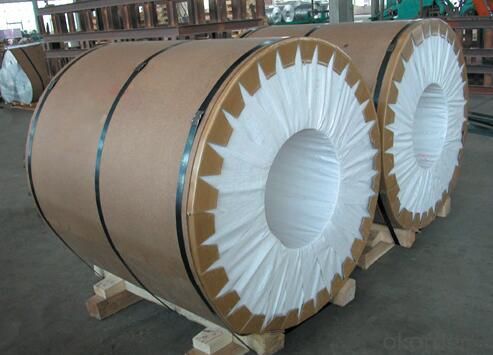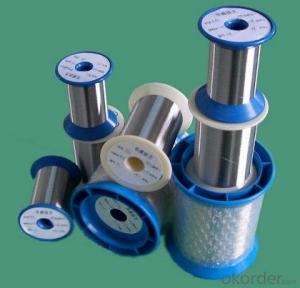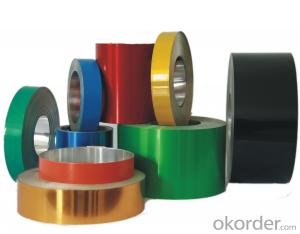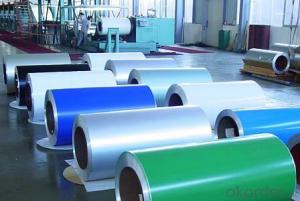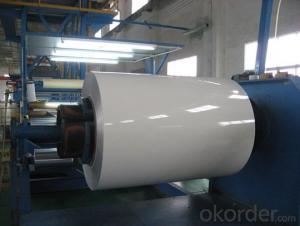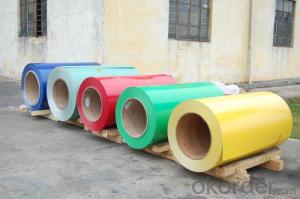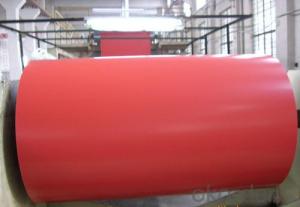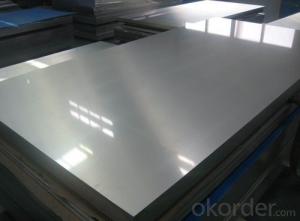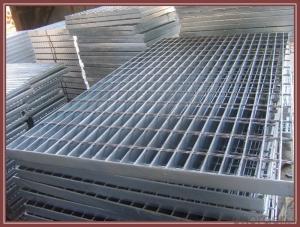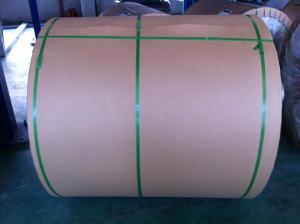1/16 Aluminum Sheets - Painted Aluminum Coil for Roller Shutters
- Loading Port:
- Shanghai
- Payment Terms:
- TT OR LC
- Min Order Qty:
- 8 m.t.
- Supply Capability:
- 20000 m.t./month
OKorder Service Pledge
OKorder Financial Service
You Might Also Like
Specification
China Aluminum Product, Painted Aluminum Coil for Roller Shutters
Packaging & Delivery
Packaging Details: standard seaworthy exporting carton,
Wooden pallets,waterproof paper and plastic coverage or or as per customer's requirements
Delivery Detail:20-45 days
Specifications
aluminum sheet manufacturer in China
1.High quality aluminum sheet/coil
2.Reasonable price
3.Prompt delivery
4.Wearability
Professional Aluminum Sheet Manufacturer in China
2.Application: Widely used in ACP,construction like curtain wall,shutter,ceiling,interior or exterior decoration etc.
3.MOQ:about 5Mertic Tons with each size.
4.Port qingdao,ningbo,shanghai,tianjin port,china.
5.Payment Terms: 100% Irrevocable L/C at sight or 30% T/T as deposit,70% balance against the B/L copy.
6. Delivery: about 30 days after receving the deposit or L/C.
7. Certificate: SGS,ISO9001-2008 etc.
8. Attention:The specific things can be negotiated according to the customers' requirment.
FAQ
Q1:Do you provide sample? How many days will samples be finished?
Free samples will be provided if needed, but customers should undertake shipping cost or freight charges, samples will be finished in 5-7days
Q2: Can we visit your factory?
Welcome to our factory at any time.
Q3: Complaint solving process
Finding your salesman—Salesman provide you the solution (If it’s our responsibility, we will resend substitutes or return money or provide discount for your next order, etc.; If it’s shipping company’s responsibility, we will also help you until the problem is resolved.) —If salesman can’t solve your problem, please call our manager .
Q4: Delivery time
3~30working days after confirming the payment. If the order is urgent, we will push our workers to finish in advance.
Q5: What's your MOQ?
Normally 8MT are requested as the minium order quantity ,we shall give
additional instructions in special circumstances.
Q6: What are the terms of payment and currencies do you accept?
T/T or L/C is accepted, currently we appreciated your payment through
USD,EUR, RMB
Q7: Do you accept customized orders?
Yes, we do. Your customized orders are always welcomed. Please kindly offer us your samples or drawings, so that we can customize the products according to your preferences. About any further detail, please feel free to contact us.
Q8: What information should I let you know if I want to get a quotation?
Your detailed requirements regarding the products's dimensions, including shape, thickness, top out (length*width*height), and your order quantity are highly appreciated if you want further information about our quotation
Q9: How about the mass production?
The lead time of mass production depend on quantity, usually 25-30days (20FT) .
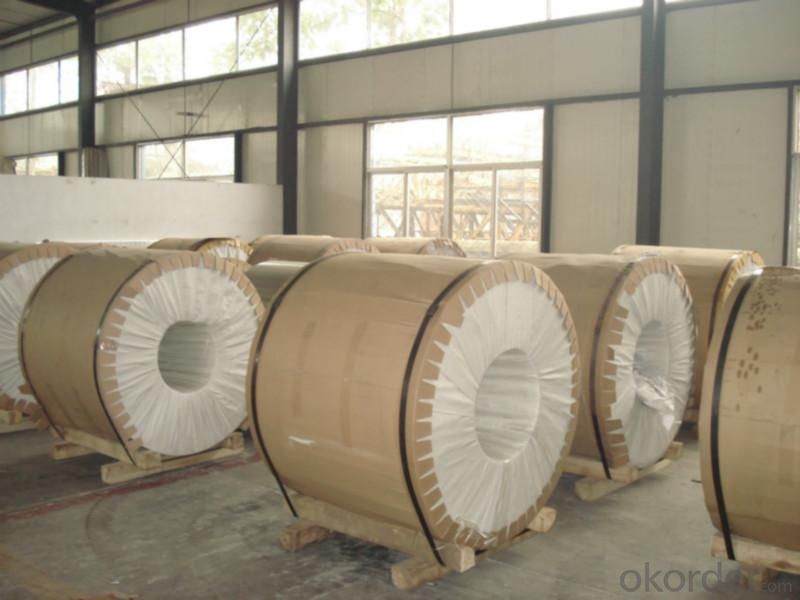
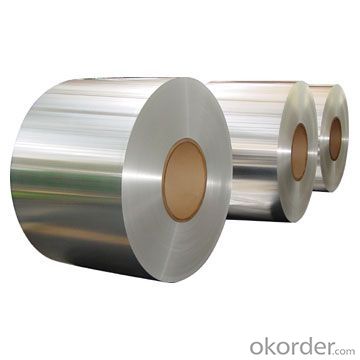
- Q: How do you prevent distortion of aluminum sheets during welding?
- To prevent distortion of aluminum sheets during welding, there are several key measures that can be taken: 1. Proper joint preparation: Ensuring that the edges of the aluminum sheets are properly cleaned and beveled before welding is crucial. This helps in achieving a better fit-up and minimizes the chances of distortion. 2. Fixture and clamping: Using appropriate fixtures and clamps to hold the aluminum sheets in place during welding can help to restrain and distribute the heat more evenly. This helps in reducing the risk of distortion by preventing the sheets from moving or buckling due to thermal expansion. 3. Tack welding: Prior to performing a full weld, tack welding can be done at regular intervals along the joint. This helps in temporarily fixing the sheets in place and distributing the heat, allowing for more controlled cooling and minimizing distortion. 4. Welding sequence: Applying a proper welding sequence can also help in preventing distortion. It is recommended to start welding from the center and gradually move towards the edges, alternating between sides. This helps in balancing the heat input and minimizing distortion by allowing the welded sections to cool down before the next weld is performed. 5. Preheating and post-weld heat treatment: For thicker aluminum sheets, preheating the material before welding can help to reduce the temperature gradient and minimize distortion. Additionally, post-weld heat treatment can be applied to relieve residual stresses and promote dimensional stability. 6. Welding technique: Employing appropriate welding techniques such as using a lower heat input and slower travel speed can help in minimizing distortion. Additionally, using a smaller weld bead size and avoiding excessive weaving can also help to control the heat input and reduce the chances of distortion. 7. Proper weld parameters: Ensuring that the welding parameters such as voltage, current, and wire feed speed are properly set and maintained is crucial. Using the correct parameters for the specific aluminum alloy being welded can help to achieve a more controlled heat input, minimizing distortion. By implementing these preventive measures, the risk of distortion during aluminum sheet welding can be significantly reduced, resulting in improved weld quality and dimensional stability.
- Q: Is it possible to use aluminum sheets as a material for the exterior walls of a building?
- <p>Yes, aluminum sheets can be used for exterior walls. They are lightweight, durable, and resistant to weathering and corrosion, making them suitable for facades. Aluminum sheets can be easily shaped and offer design flexibility. They also have good thermal properties and can be coated or finished in various ways to enhance their appearance and performance. However, they may not provide the same insulation as traditional materials, so additional insulation may be required.</p>
- Q: Can aluminum sheets be used for air ducts?
- Yes, aluminum sheets can be used for air ducts. Aluminum is a commonly used material for air ducts due to its lightweight, durable, and corrosion-resistant properties. It is also easy to work with and can be easily shaped and formed to fit various duct designs.
- Q: This question asks for methods to clean aluminum sheets to preserve their appearance.
- <p>To clean aluminum sheets and maintain their appearance, follow these steps: 1. Use a mild detergent mixed with warm water to create a cleaning solution. 2. Gently scrub the aluminum sheets with a soft cloth or sponge to avoid scratching the surface. 3. Rinse thoroughly with clean water to remove any detergent residue. 4. Dry the sheets immediately with a soft, dry cloth to prevent water spots. 5. For stubborn stains, use a non-abrasive cleaner specifically designed for aluminum. 6. Avoid using harsh chemicals or abrasive materials that can damage the aluminum's finish. Regular cleaning will help preserve the appearance and longevity of aluminum sheets.</p>
- Q: Are the aluminum sheets suitable for signage or advertising purposes?
- Aluminum sheets are an excellent choice for signage and advertising purposes due to their high suitability. The versatility and durability of aluminum make it resistant to rust, corrosion, and weathering, which is ideal for outdoor use. Furthermore, its lightweight nature facilitates effortless installation and transportation, while the smooth surface adds a touch of professionalism and sophistication. The customizable nature of aluminum sheets allows for easy cutting, shaping, and engraving, enabling designers to create captivating signs and advertisements. Additionally, aluminum sheets can be directly printed on or laminated with vinyl to achieve vibrant and long-lasting graphics. In summary, the remarkable properties of aluminum make it the perfect material for signage and advertising purposes.
- Q: What is the typical thickness tolerance for aluminum sheets?
- The typical thickness tolerance for aluminum sheets can vary depending on the specific application and industry standards. However, in general, the accepted thickness tolerance range for aluminum sheets is typically within ± 0.005 to ± 0.015 inches. This means that the actual thickness of the sheet may vary within this tolerance range from the specified thickness. It is important to note that different industries may have different tolerance requirements based on the intended use of the aluminum sheet, so it is always advisable to consult the relevant industry standards or specifications for specific tolerance requirements.
- Q: What are the advantages of utilizing aluminum sheets in construction projects in terms of environmental impact?
- <p>Using aluminum sheets in construction offers several environmental benefits. They are highly recyclable, which reduces waste and conserves natural resources. Aluminum is lightweight, reducing the carbon footprint associated with transportation. It also has a high strength-to-weight ratio, leading to less material usage and lower energy consumption in production. Additionally, aluminum's reflective properties can help in reducing heat absorption, contributing to energy efficiency in buildings. Moreover, aluminum production technology has advanced to minimize harmful emissions, making it a more sustainable choice for construction materials.</p>
- Q: What are the different types of surface treatments available for aluminum sheets?
- Aluminum sheets can be treated in a variety of ways to achieve specific purposes and unique characteristics. Anodizing, painting, powder coating, and polishing are some of the most commonly used surface treatments for aluminum sheets. Anodizing involves the creation of a thick oxide layer on the surface of the aluminum sheet. This treatment not only enhances the appearance by providing a range of colors but also increases corrosion resistance and durability. Anodized aluminum sheets are widely utilized in architecture, automotive parts, and electronics. Painting is another popular surface treatment for aluminum sheets. It entails applying a layer of paint to enhance appearance and provide additional protection against corrosion and wear. Painted aluminum sheets are commonly seen in signage, building facades, and decorative applications. Powder coating is a type of surface treatment where a dry powder is applied to the aluminum sheet and then heated to create a protective layer. This treatment offers excellent durability, resistance to weathering, and a wide range of color options. Powder coated aluminum sheets find extensive use in the construction industry, as well as for automotive parts and appliances. Polishing involves buffing the aluminum sheet to create a smooth and reflective surface. This treatment enhances the aesthetics, making it perfect for decorative applications like furniture, jewelry, and architectural accents. In summary, the selection of surface treatment for aluminum sheets depends on desired appearance, functionality, and application requirements. Each treatment provides distinct advantages and characteristics, allowing for versatility and customization in various industries.
- Q: Can aluminum sheets be used for solar panel applications?
- Indeed, solar panel applications can make use of aluminum sheets. Thanks to its lightweight nature, strength, and resistance against corrosion, aluminum is widely favored for solar panel frames and mounting systems. Moreover, its recyclability renders it an eco-friendly choice. By providing structural support and stability, aluminum sheets enable solar panels to endure diverse weather conditions and maintain longevity. Furthermore, aluminum's excellent thermal conductivity aids in dissipating heat generated by the solar panels, thereby enhancing their overall performance and efficiency.
- Q: Can aluminum sheets be anodized for improved hardness?
- Yes, aluminum sheets can be anodized to improve their hardness. Anodizing is an electrochemical process that forms a protective oxide layer on the surface of aluminum. This oxide layer not only enhances the sheet's corrosion resistance but also increases its hardness, making it more resistant to wear and abrasion. By controlling the anodizing conditions, such as the type of electrolyte, voltage, and duration, the thickness of the oxide layer and consequently, the hardness of the aluminum sheet can be precisely adjusted. Anodized aluminum sheets find applications in various industries, including automotive, aerospace, construction, and electronics, where a combination of improved hardness and corrosion resistance is required.
Send your message to us
1/16 Aluminum Sheets - Painted Aluminum Coil for Roller Shutters
- Loading Port:
- Shanghai
- Payment Terms:
- TT OR LC
- Min Order Qty:
- 8 m.t.
- Supply Capability:
- 20000 m.t./month
OKorder Service Pledge
OKorder Financial Service
Similar products
Hot products
Hot Searches
Related keywords










